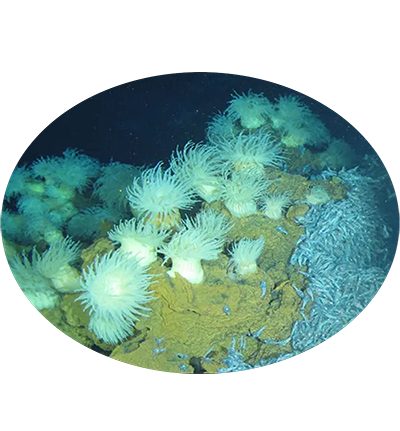The vent sea anemoneAlvinactis idsseensis sp. Nov. is a species in the family Actinoscyphiidae. They can flourish in a variety of deep-sea environments. Most sea anemones thriving in sulfide-rich hydrothermal vent peripheral zone obtain nutrients by eating blind shrimp, rather than relying on chemoautotrophic carbon production.
Animalia Kingdom; Cnidaria (Phylum); Anthozoa (Class); Actiniaria (Order); Actinoscyphiidae (Family); Alvinactis (Genus); Alvinactis idsseensis sp. Nov. (Species)
Alvinactis sp. ZX-2022
| Species | Phylum | Common Name | Ecosystem | Depth | Habitat | NCBI Taxonomy ID |
|---|
| Alvinactis idsseensis sp. Nov. | Cnidaria | Alvinactis sp | Deep sea | 3,279 | Southwest Indian Ocean “Edmond” hydrothermal vent filed in the CIR (69 59′E, 23 87′S) | 2978091 |
| Genome Assembly | Genome Size | Assembly level | Released year | WGS accession | Submitter | BioProject | BUSCO completeness (%) | Scaffold/Contig N50 (kb) | GC content (%) | Repeat Rate (%) | Gene Number |
|---|
| - | 456.58Mb | Chromosome | 2023 | - | Institute of Deep-sea Science and Engineering, Chinese Academy of Sciences | PRJNA909864 | 92.80 | 27,561/1,715 | 38.84 | 63.27 | 31,960 |
| Title | Journal | Pubmed ID |
|---|
| Genetic adaptations of sea anemone to hydrothermal environment | Science Advances | 37862424 |
| Annotation ID | Description | Type | Subtype | GeneRatio | Evolution Type | P-value | Q-value |
|---|
| GO:0042803 | protein homodimerization activity | GO | Molecular Function | - | positive selection | 3.65E-05 | 0.04838753 |


